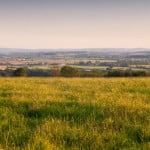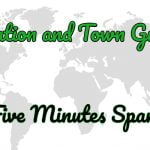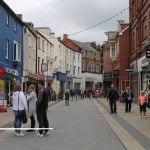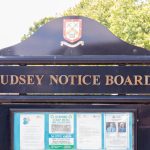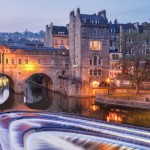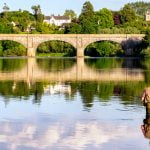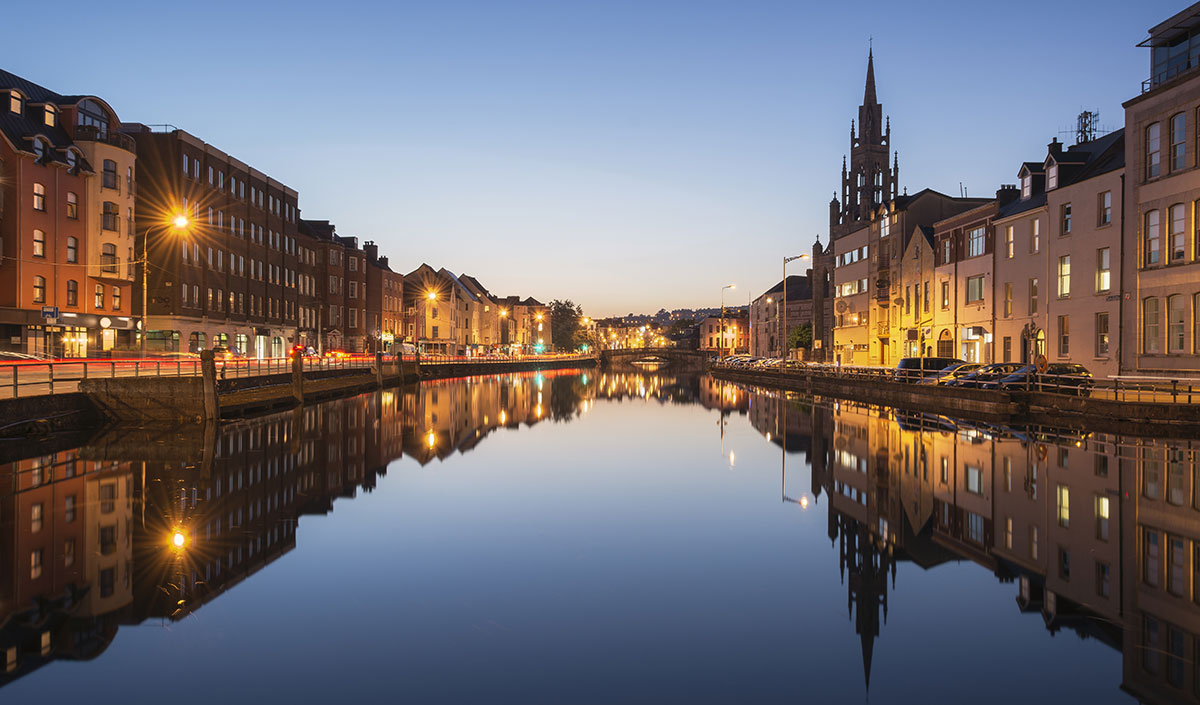
Ever wanted to know all about The City of Cork? Well, now you can!
Cork, the gem of Munster, is the second biggest city in the Republic of Ireland. It must be very annoying for the locals when they see ROI in business articles. Return on Investment doesn’t carry the same weight.
It is widely believed that Cork comes from the old Irish for ‘marshy place’, which would be Corcaigh. Legend has it that St. Finbarr built an abbey on the sight that is now cork, in a marshy place. In those days, the abbey would have attracted workers, which needed houses, and so a town would eventually grow.
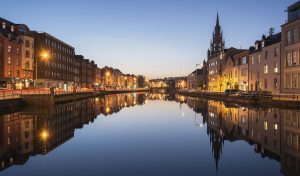
Image: Stephen Long/Shutterstock.com
Let’s take a more in-depth look at how a small abbey becomes the second-largest city in ROI… Did you read that as Return on Investment? We didn’t…
A Brief History of Cork
Back in the Abbey days, Cork was quite a successful settlement. It was so successful, in fact, that the Vikings sailed up the river to raid it around about the 9th century. They eventually settled in their own island-fort on the River Lee, which would eventually grow to become Cork… but it wouldn’t be a straight path.
The Viking leader was Ottir Iarla and he raided extensively throughout the area. The fort would have been cast in wood originally and life would have focused on stealing what they needed from surrounding areas, or in trading on the river. To this day, many of the second names in the area are of Norse descent, which sets them apart from the rest of Ireland.
In 1172, 32 Norman ships were raised by the Vikings to defend themselves from the Norman invaders. The Normans were beaten according to some sources, according to others the city was surrendered. At any rate, the Norman’s eventually conquered Ireland and King John I – the invader – granted the first charter to the city in 1185. The Charter would have covered things like cleaning and paving the streets, or the allowance to hold things like weekly markets or annual trade fairs. The Norman’s also did Cork the great favour of rebuilding the town walls in stone, which meant that even though there were multiple fires over the years, none of them burned the wall down.
Medieval Cork
Cut forward a couple of hundred years and English control over Ireland was lessened to a strip of land known as the Pale. Cork was part of this strip of land, separated from everywhere else as a port town of distinction. They would have traded in carpentry and joinery, wool and linen creation, the weaving of sailcloth, blacksmithing goods, and other such medieval wares. During this time, Cork was subject to what came to be known as ‘Black Rent’. This was similar in nature to how the Vikings exhorted money from the English counties for so many years. They would attack once, deliberately burning, mutilating, raping and generally hurting as many people as possible. Then they would send a clear ultimatum to the local leaders threatening to do the same thing again if they didn’t pay them money. Basically, the Black Rent was extortion.
The Black Death
The Black Death reached Cork at the same time as it hit the ports of England. In 1349, the three-wave-strong plague first hit and would continue to kill people until the 1380’s. With no sewer systems in place and the river being the source of most of the water in town, it would have spread like fire. Irish historical records say it would have been an unprecedented loss of life. Some of the chronicles left by abbey’s and churches tell of there being not enough people left to bury the dead. Witness reports record that hardly a house went untouched and that the Anglo-Irish population suffered worse than the Gaels.
Around the same time period saw an Augustinian Abbey built in Cork which, nowadays, is known as Red Abbey Tower. The friars also arrived in the 13th century and would have been Dominican, the kind who wore black robes. The Franciscans in Grey would also have lived here.
Shortly after all of this happened, a man came over from England, said he was the rightful king, and started recruiting Irish folk to support him. He was later executed alongside all those that helped him because Henry VII was having none of it. Cork gained the nickname ‘Rebel Cork’ as a slight.
Let’s pause a moment and inject a little fun into this situation. Learning is great and all, but history works best in small doses.
Fun Facts About Cork!
Having been around since before the 10th century. Cork has a lot of history to choose from. What are the Five Minutes Spare favourite fun facts? Let’s find out!
- Cork Harbour is a natural harbour made between island, river, sea, and land. It’s massive. It’s so massive, in fact, that they think it is only second in size to Sydney Harbour. The one with the pretty opera house
- The yacht club for this massive harbour is the oldest known to man. It was formed in 1720, presumably by rich merchants.
- The first Irish potato was grown at Sir Walter Raleigh’s Cork home in 1588. This may be our favourite fun fact of all time. Did you know the only reason the Irish earned a ‘lazy’ stereotype was because of the potato? If a man could feed his family for a year on a half an acre of tatties, he didn’t need anything else in life.
- Henry Ford’s ancestry was Cork based and so when it came to expanding across the sea, the first Ford factory outside America was built here[i].
- The Blarney Stone everyone kisses are one Blarney Castle, not inside the city but inside county Cork. Well worth a visit but we’re not sure about the kissing. Pandemics and all that.
There’s a whole load more… mostly about how the county and the people within it are all rebels. It’s not necessarily a bad thing, it just depends which side of history you fall on… Now back to the history of the place. Let’s jump in at the 16th century onwards since that’s when things started to liven up a bit.
Late History in Cork
In 1649 Cork was taken by the armies of Oliver Cromwell. It is just across the water from Bristol port so there was a lot of contact. The Nine Years War took place at the start of the century, and then the Second Desmond Rebellion came along to kick them in the teeth. They would later be involved in the Irish Confederate Wars and the Williamite Wars. Poor Cork!
A fort was built in the 16th century by the English only to be burned down, rebuilt, burned down etc… up until 1922 when it was finally, ultimately destroyed by the civil war. The population would have been about 5k and their main trade was in cattle, but law changes late into the century saw them switch to exporting animal products instead. The Huguenots came along in between the turn of the centuries and introduced their special way of weaving linen into town. They would have drastically improved the quality of textiles produced in and around the city.
In the 18th century several churches and chapels were built. The oldest is thought to be Christ Church, which was finished in 1726 according to parish records. A corn and butter market were built, since butter was a main export (and you can still buy Cork butter, to this day). The port expanded to include a customs house which was like levelling up.
By the 19th century the population had skyrocketed to over 80k and crowding had become an issue. The 1840s saw the Great Famine destroy countless crops, leaving the people with little to eat. The corn exchange raised the prices because of demand, and a few hundred years later we still haven’t learned the lessons we should have learned back then (€4.99 for hand sanitizer!). Further, it is thought that nearly 2000 people left Cork and moved to Canada in an epic expedition that landed up in Peterborough. During the famine years it is unclear how many thousands fled across the sea.
For those that stayed, the 19th century saw advancements in technology if not in sustenance. Streetlights, coaches, railways, and the University all opened in this century. The early 1900s saw a newspaper and several streets created in the city… but all was not calm and peaceful. Cork was a distinctly Irish National city who popularly supported the independence movement when WWI hit.
Cork, like the rest of Ireland, was not subject to conscription. Large numbers of volunteers made their way across the seas, nonetheless. For the most part these lads ended in the Royal Munster Fusiliers which were heavily damaged on the front lines. As a result, many young men who knew each other all died. This fed the turmoil back home and seemed to support the independence movement. From 1922-23 there was a horrendous war between the different Irish factions, fed on from the Easter Rising in 1916. A paramilitary police force named the Black and Tans terrorised the city for a number of years, eventually burning some 300 buildings to the ground in the 20s. The IRA seemingly used the city as a battleground – but to be honest this is where things descend into madness for a few years. We don’t feel confident on relating the Civil War because we don’t have a history degree. You can read about it here, if you are interested.
After all this started to settle down, the Second World War came and went with more loss of life. Worse, industry started to recline in the area because now it had earned itself a bit of a reputation. The old manufacturers went into recession while the new age of technology rolled in slowly. Nowadays, the city is home to pharmaceutical companies, brewers, and food processors. Like we said, you can still buy Cork butter.
Modern Cork
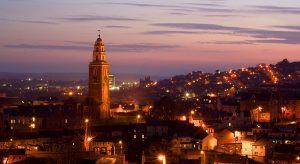
Image Peter O’Toole/Shutterstock.com
In 2005 Cork became the European Capital of Culture and, since then, seems to have been doing a great job getting back on its feet economically. It remains an import port city, with the largest harbour in Europe, and it’s so big that the people who live there sometimes joke that it’s the ‘real’ capital of Ireland. We think European Capital of Culture is a great way to think of this city. So much has gone on and so much will come – but for the moment, Cork is a shining jewel in the Irish crown. We sincerely hope it stays that way for years to come.
Famous People from Cork
Let’s take a moment out of the history and the fun facts to look into the area of famous people from Cork. Here are some of the Five Minutes Spare favourites:
- Now, we usually use this section to name drop people you will have heard of, but one has such an interesting tale we could help it. Anne Bonny, the woman, was a Pirate in the Caribbean sometime in the 17th She was Calico Jack’s partner and lover before she was captured and sentenced to death. Nobody knows what happened to her except that her execution was stayed because she was pregnant. Why has nobody made a film about her, never mind Captain Jack?
- Mary Elmes, who saved 200 Jewish children in WWII.
- A plethora of sports persons, including cricketer Percy Exham, Footballer Colin Healy, and Olympian Marian Heffernan.
- Actor Cillian Murphy, arguably best known for his leading role in 28 Days Later, is a Cork man.
- Graham Norton… Cork.
- A number of painters, singers, and writers. You can view the full list, here.
Cork has a habit of breeding famous people – not only famous faces, but those with awesome stories to tell. It’s part Gaelic history and part bard’s haven, with the occasional sports person throwing a discus here and there.
Let’s get on to the part you have all been waiting for… the best things to do in Cork, according to reviews.
Attractions in the City of Cork
There is so much to see and do in this historic town that we are almost at a loss as to where to start. Let’s keep to the history and use it to start us off.
Historical Sights and Landmarks
Blarney Castle is top of any list. It’s an astonishing sight to see and doesn’t involve more than a half hour in the car to get to. Historically, people have kissed the Blarney stone for luck, you may or may not be able to do the same. They also have some splendid gardens that are still tended and worth writing home about.
Historically following hot on its heels is Spike Island, the island in them idle of the harbour which the Vikings originally settled on, where the abbey’s were built, and where a monastery grew. Some 1300 years of history are summed up inside this really cool old set of buildings. Another historic sight to see while you are on the island is the old Cork Gaol. It gives you an eerie and humbling glimpse into the past, punishment, and the pain of the prisoner’s lives. Trigger warning: there are mannequins everywhere.
You should absolutely go and visit the University College in Cork if you are in the city. You will be able to see the gorgeous old building for miles around. You could ask to tour it, or you could just wander in and catch a lecture. Universities tend to be quite bohemian in that way.
Shopping and Retail
Next, we are moving on to shopping and retail. This is because the old English Market in the centre of town. The English Market of Cork is primarily a food market, but it is an indoor variety of stalls with holders competing for your attention – just like in the old days. This place really mixes shopping and retail with historic attractions.
On top of this old-style way to shop, you will find centres and streets packed with retail goodness. Check out the Merchant’s Quay shopping centre which describes itself as a ‘retail hub’, or head for Cornmarket street and browse the best shops in town.
Outdoor Attractions, Sports and Recreation
Cork has numerous sports teams, all of which are within the city walls. The Cork City Football Club is a favourite for fans and play most weekends. They are best known by there nickname… the Rebel Army!
There are plenty of outdoor attractions that you will love here. The Glenview Gardens and Fairy Trail are a beautiful set of gardens, perfect for any little ones with a good imagination. Fitzgerald park has some magnificent sculptures and makes a great place for a picnic, and the Ballycotton Cliff Walk is an excellent way to take in some stunning views while getting both fresh air, and exercise.
Museums and Galleries
If you want to learn about the area, the people, and figure out all those wars, then check in to the Cork Public Museum. On top of this, the Gaol on Spike Island is a museum and represents an interesting afternoon. There is a Butter Museum – it really is that important to them – and why not? They make delicious butter. Go check it out.
The Old Cork Waterworks Experience is another interesting place to learn. The mills and waterways around town powered trade here all through the ages and is well worth learning about. This one is multi-award winning, so expect greatness.
There is a notable art museum in town that all lovers of fine art should check out. The Glucksman displays historic works but there are also two galleries in town should you wish to buy fine art. The Crawford Art Gallery and the Lavit Gallery on the quayside will both suit your needs.
Other Cork Points of Interest
There are actually so many sights and attractions in Cork that we needed a little extra space, just to summarise the ones we didn’t get to. Some of the best things to do in Cork also include:
- St Fin Barre’s Cathedral is an Instagram worthy backdrop if you are looking for amazing old buildings with gothic architecture.
- In the wilderness outside of the city and overgrown like a fantasy garden you will find the former home of the Royal Gunpowder Mills. War buffs will love it.
- There are two old forts you can visit, both in various stages of disrepair. Elizabeth Fort is the better kept, but Camden Fort Meagher is also an interesting walk.
- The CIT Blackrock Castle Observatory is exactly what it sounds like and will let little kids dream of soldiers.
No matter what you get up to, or when you go, Cork has a brilliant variety of choices inactivity. Whether you are there as a couple and want a romantic weekend sightseeing, or whether you are there with kids – you can always find something to get up to.
How to Get There?
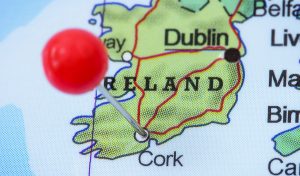
Image: Tuomas Lehtinen/Shutterstock.com
So now you know everything there is to know about Cork, but you still might get lost if you tried to walk it. We need roads, darned it! Roads and maps!
By Road
Head south-east out of Dublin, or you can swing around the coastal road on the N8 and take in the sights.
By Rail
Cork Kent Station is run by Irish Rail and is the most central, you can connect to it from all the main lines.
By Air
Cork Airport is said to be the gateway to the south of Ireland. It actually looks like it’s tropical…but alas, it’s still Ireland.
By Sea
Aim for the harbour. If you are on the south east coast of Ireland, you just need to follow it north. If you are in Bristol it is a hop across the water.
Got Five Minutes?
If you are in need of some entertainment in your free five minutes, then we are here to provide. We have a wide array of factoids on all sorts of places you might want to travel to. Hop on over to our pages and then hop on a plane, train, or automobile. However you get there, go with Five Minutes. See what we did there?
[i] https://www.irelandbeforeyoudie.com/top-10-facts-cork-didnt-know/
https://en.wikipedia.org/wiki/History_of_Cork
http://www.localhistories.org/cork.html
